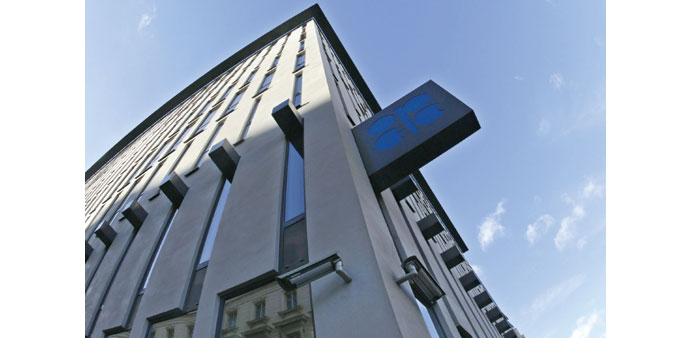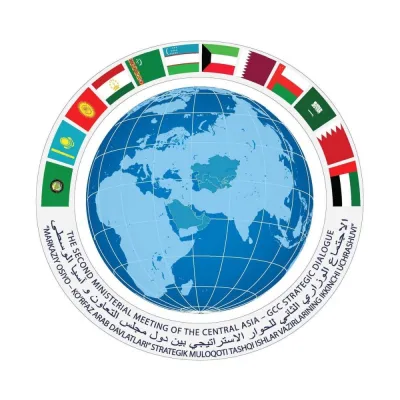A general view of the Opec building and logo in Vienna. Gulf and other Opec members have said they wanted to safeguard their share of a market that has faced a supply glut as a result of sharp increases in the production of shale and sand crudes.
AFP
Kuwait City
Gulf oil producers, led by Saudi Arabia, will resist attempts to cut output at an Opec meeting next month as preserving market share remains their top priority, industry analysts said.
A decision by the 12-member Organisation of Petroleum Exporting Countries not to cut production in November sent prices crashing 60% before a partial recovery in recent weeks.
Gulf and other Opec members said they wanted to safeguard their share of a market that has faced a supply glut as a result of sharp increases in the production of shale and sand crudes.
“Preserving market share still remains a top priority for Gulf states,” Saudi economist Abdulwahab Abu-Dahesh said. “This time they are even encouraged by signs their November strategy is working after a drop in US shale oil production and in the number of rigs,” Abu-Dahesh told AFP.
In the face of the sharp drop in their earnings, some Opec members, led by Iran and Venezuela, have publicly called for the group to cut production to support prices.
“I don’t thing that any change will happen at Opec’s meeting,” a former member of Kuwait’s Supreme Petroleum Council, Musa Maarafi, said.
“Gulf states will continue to defend their market share and it is their right to do so,” Maarafi told AFP. “They will not accept to cut output at their own expense unless an agreement is reached with non-Opec producers.”
The burden of any cut in Opec output would likely fall on the group’s Gulf members — Saudi Arabia, Kuwait, the UAE and Qatar — whose production has risen by around 3.5mn bpd since 2011.
Currently, they pump 16.8mn bpd, or 55% of Opec’s total, with Saudi Arabia accounting for 10.3mn bpd. They export around 12.5mn, almost two-thirds of the group’s total.
Head of marketing at national oil conglomerate Kuwait Petroleum Corp (KPC) Jamal al-Loughani told a symposium last week that a change in the global energy map has made market share a highly sensitive issue.
He said the sharp rise in US production to 9.4mn bpd had allowed Washington to stop light crude imports from Africa.
It also cut imports of heavy oil from Latin America, substituting it with Canadian sand oil.
“That led African and Latin American exporters to seek new markets in the east,” said Loughani, adding that more than 3.0mn bpd of additional high good quality crudes are being pumped into these markets in competition with Gulf exports.
“That places additional pressure on Opec members, especially Gulf exporters, to cooperate to maintain market share and even ensure new takers for additional quantities in the future,” he said.
A relative rebound in prices and a drop in US shale oil output are likely to convince Opec to continue with its strategy.
Data from the US Department of Energy showed US crude production dropping 112,000 bpd to 9.26mn bpd in early May.
“Prices are improving, growth in supplies from outside Opec — especially shale oil — is lower than before and demand is recovering,” Kuwait’s governor at Opec Nawal al-Fuzai told reporters last week.
Over the past few weeks, oil prices have climbed about 40% but remain well below their levels of more than $100 a barrel in June last year.
Al-Fuzai said crude oversupply dropped from around 2mn bpd late last year to between 1mn and 1.2mn now.
But Commerzbank warned in early May that “the oil market will continue to be oversupplied until Opec significantly cuts its output.”
And the International Energy Agency reported that Opec’s output hit 31.21mn bpd in April, the highest level since September 2012.
“It would thus be premature to suggest that Opec has won the battle for market share,” the IEA said. “The battle, rather, has just started.”



